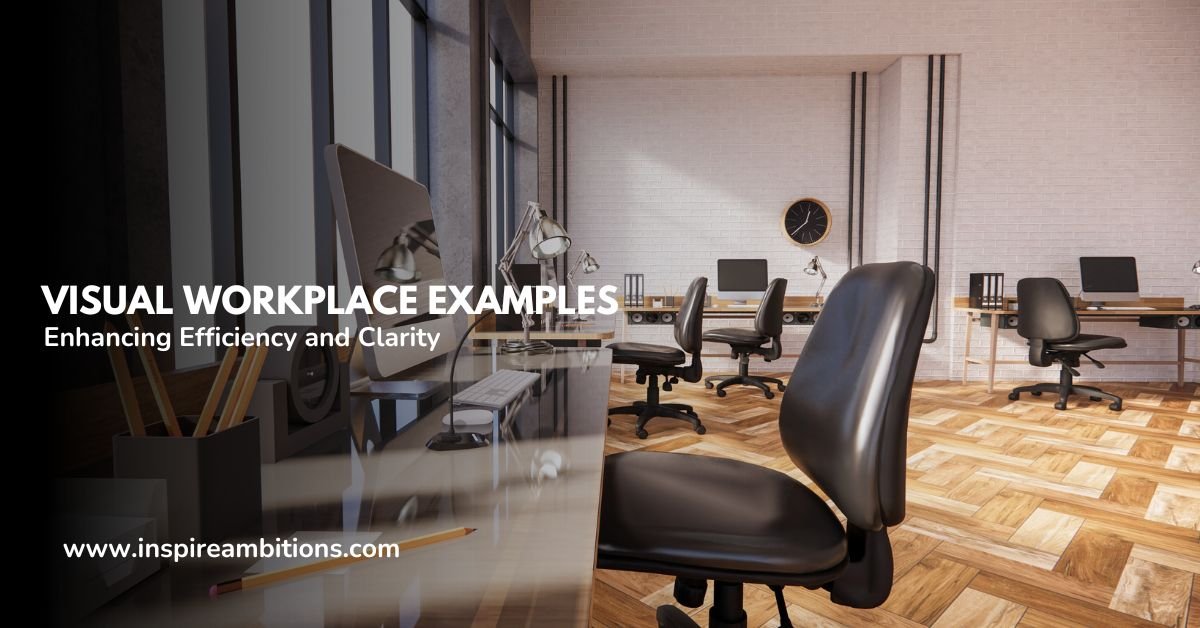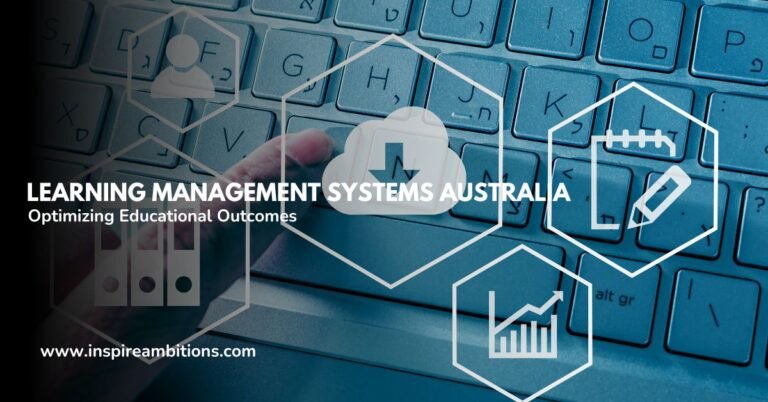أمثلة مرئية في مكان العمل – تعزيز الكفاءة والوضوح
A visual workplace is an encompassing term for organizational practice that emphasizes using visual aids to increase transparency, efficiency, and safety within a work environment. By implementing visual tools such as labels, signs, floor markings, and visual boards, employees can quickly identify what needs to be done, how it should be done, and by when.
These practices are rooted in the lean manufacturing philosophy, which seeks to minimize waste, engage employees, and create a self-explanatory workplace.
In many industries, visual devices streamline processes and significantly enhance safety by providing clear, at-a-glance instructions and warnings.
For example, safety signage in a chemical plant can convey hazardous material information to ensure proper handling and emergency response. Colour-coded shelving in a storeroom enables workers to locate the right tools or materials swiftly, thus reducing search time and mitigating the risk of grabbing the wrong item. These examples illustrate how a visual workplace is an automated environment where standards are communicated and maintained.
Visual Workplace Examples – Key Takeaways
- Visual aids in the workplace foster a lean, efficient, and safer environment.
- Implementing visual tools simplifies process flow and employee engagement.
- Safety and compliance are significantly enhanced through visual communication.
Fundamentals of Visual Workplace

A visual workplace is a powerful tool for conveying information and ensuring efficient workflow through visual aids. This clarity fosters an environment where actions and risks are managed effectively.
Importance of Visual Communication
Visual communication is the cornerstone of a visual workplace. It helps you quickly understand processes and identify problems without extensive training or detailed instruction. Visual cues, such as colour coding, labels, and signs, make it apparent at a glance what actions should be taken or what items are in use. This form of communication fosters an intuitive flow within an organization, reducing errors and creating a safer work environment.
Critical Principles of Visual Management
- الرؤية: All necessary information should be easily accessible and visible to those who need it.
Example: A shadow board outlines tools and equipment, allowing you to see instantly if something is missing.
- Standardization: Consistent use of visual devices across the workplace simplifies understanding and action.
Example: Safety signs with universal symbols and colour standards alert you to hazards.
- Simplicity: Information should be conveyed as simply as possible without compromising clarity.
Example: Floor markings direct traffic and delineate work areas clearly and efficiently.
- Directness: Visual information should be presented so that you can act directly and without hesitation.
على سبيل المثال، Kanban cards indicate inventory levels and trigger immediate action when supplies need replenishment.
By integrating these principles, visual management becomes an effective strategy to support and enhance an organization’s operations. Visual aids allow for continuous improvement and a proactive workplace management approach.
Visual Devices and Tools in the Workplace

“A picture is worth a thousand words in the right place.” When you step into a workplace where every element has a visual cue, you know you’re in an environment that communicates effectively and efficiently.
Types of Visual Signs and Labels
Visual signs and labels are the silent communicators in the workplace. They direct, inform, and warn employees without verbal instruction. Signs, like exit and warning signs, utilize bold colours و symbols to convey messages quickly. Similarly, labels identify equipment and storage locations using a combination of text, pictograms, and colour-coding to minimize confusion and enhance safety.
- Safety Signs:
- أحمر: Stop, danger, or prohibited actions
- Yellow: Warning, be cautious or slow down
- Green: Safe to go or positive action
- Informational Labels:
- Equipment tags
- Instructional labels on machinery
Implementing Effective Visual Aids
Properly executed visual aids can transform a chaotic workspace into an efficient, automated environment. Charts و floor markings guide workflow and maintain organization. For instance, coloured floor markings can outline work areas and pathways, improving navigation and safety. When you choose visual tools, ensure they are simple, straightforward, and strategically placed for maximum impact.
- Visual Aids:
- Charts for process steps
- Floor markings for safety and navigation
Innovative Visual Solutions
Adapting and evolving visual tools can lead to innovative solutions in the workplace. Interactive digital displays can update quickly, providing immediate تواصل about changes or emergencies. Moreover, integrating technology with traditional visual aids such as static signs creates a dynamic environment responsive to the needs of your daily operations.
- High-Tech Visual Tools:
- Digital kanban boards
- Real-time update monitors
By incorporating these visual devices and tools, you create a workspace that ‘speaks’ to the employees, guiding and informing them with minimal disruption to their tasks. Embrace the clarity and efficiency of a visual workplace to ensure that what is supposed to happen consistently and safely happens.
9 Strategies for Employee Engagement Through Visual Management
You’ve likely heard the saying, “A picture is worth a thousand words.” In خطوبة موظف, visual workplace strategies embrace this idea, transforming workspaces to enhance communication, efficiency, and ownership. The key points are how visual tools can be woven into day-to-day operations and how they are paramount to fostering an engaged and effective workforce.
Training for Visual Workplace Excellence
To excel in a visual workplace, employees need proper تمرين that is both thorough and practical. A tailored 5S training program that aligns with company objectives can make a marked difference in engagement:
- Sort: Train employees to distinguish necessary tools and information from clutter.
- Set in order: Instruct on effective organization to reduce time wasted searching for tools or information.
- Shine: Teach the importance of workplace cleanliness for safety and efficiency.
- Standardize: Develop consistent practices across all teams.
- Sustain: Instill habits to maintain improvements and keep the engagement ongoing.
Training should also highlight the importance of visual clarity in the workplace. This may include labelling systems to identify equipment locations, colour coding for quick recognition, and visual aids like charts or graphs to illustrate performance metrics or standard operating procedures.
Visual Workplace as a Cultural Change
A visual workplace isn’t just a set of tools; it’s a cultural shift emphasizing transparency and continuous improvement in pursuit of excellence. It’s about creating an environment where employees feel informed, involved, and control of their workspace and tasks.
For example, implement a visual communication board displaying team goals, KPIs, and achievements. This keeps everyone aligned and reinforces a culture of recognition and accountability.
Encouraging خطوبة موظف in the design and implementation of strategies ensures that the changes resonate with the people using them daily. When employees are involved in the process, they’re more likely to own the cultural shift and champion its benefits to their routine and productivity.
In adopting these strategies, you position your team for success by creating an empowered, informed, and proactive work environment. Through visual cues and clear communication, you can foster a culture of excellence that galvanizes your workforce and drives your organization forward.
Lean Manufacturing and Visual Workplace
A seamless fusion of lean principles with visual management techniques accelerates operational excellence and paves the way for continuous improvement in manufacturing. It’s about using visual signals to streamline workflows and enhance productivity.
Integrating Lean and Visual Management
Lean manufacturing, with its origins in the Toyota Production System, is a methodology aimed at reducing waste and improving value from the customer’s perspective. Visual management then acts as a catalyst, providing immediate, actionable information through visual cues.
This integration leads to a self-ordering system where processes are transparent, issues are immediately apparent, and response times are significantly reduced. One prime example of this principle in action is the implementation of Andon systems, which help to signal problems in real time, ensuring that the production line’s integrity is maintained.
- Visual Cues: Color-coding, labels, and signs help quickly communicate information.
- Visual Controls: Kanban cards and shadow boards facilitate inventory management and tool organization.
Case Studies of Lean Visual Workplaces
Prominent companies adopting lean visual workplaces utilize tools like Six Sigma and lean methodologies to achieve operational excellence. Take, for example, a manufacturing plant that integrates visual dashboards to display real-time production data. This enables workers and management to identify bottlenecks or shortages immediately, promoting a culture of continuous improvement.
- Dashboard Example: Visual production status boards showing progress against targets.
- Kanban in Action: Using Kanban cards as part of a pull system in production control.
By adopting lean techniques and visual tools, companies refine their processes and often report tangible improvements—such as shortened lead times and reduced inventory costs—further contributing to a safer and more efficient workplace environment.
Safety and Compliance
In the realm of a visual workplace, safety and productivity are deeply intertwined. Through the strategic use of visuals, a بيئة العمل can become more efficient and inherently safer, meeting critical regulatory requirements.
Creating a Safe Work Environment
A visual workplace leverages various visual cues to guide behaviour and prevent accidents. Safety signs play a crucial role by marking potential hazards, emergency exits, and safety equipment locations. Employing visuals, such as colour-coded floor markings and informative safety posters, directly contributes to a safer بيئة العمل بواسطة:
- Communicating information quickly: Employees can recognize signs and instructions swiftly, reducing the risk of accidents.
- Promoting consistent adherence to safety practices: Reminders in the form of visuals help reinforce بروتوكولات السلامة and encourage امتثال daily.
Visual cues in a workplace streamline operations, reducing clutter and hazards and enhancing إنتاجية through better organized and controlled processes. This, in turn, not only fosters a safer workplace but also aligns with أنظمة and standards set by organizations like OSHA.
Regulatory Aspects of Workplace Visuals
امتثال is not just about ticking off checkboxes; it’s crucial for legal adherence and ensuring the well-being of employees. Visuals in the workplace are subject to various أنظمة, which dictate how and where safety signs should be displayed and what information they must convey. For instance:
- Signage Requirements: Specifics on colour, text size, and pictogram usage for emergency information and hazard warnings.
- Pathway Markings: Standards for aisle marking widths and colours to ensure clear travel paths.
Adhering to these regulations ensures that a workplace protects its employees and safeguards the business against potential liabilities and fines. Companies must stay up-to-date with these requirements to maintain a culture of safety and compliance.







